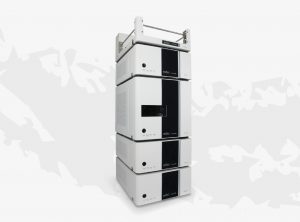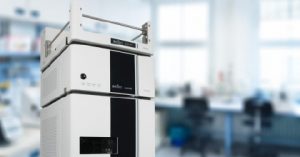Liquid Chromatography Detectors - The Different Types of HPLC Detectors
Detectors Used In HPLC
To quantify and identify the compounds separated within a HPLC column, High Performance Liquid Chromatography (HPLC) requires the use of a suitable detector. Detectors serve the crucial role of analysing the component of the eluted mixture once it has passed through the HPLC column. While there exists a range of HPLC detection methods, it is essential to acknowledge that no single detector can effectively detect all compounds or analytes. For liquid chromatography analysis, it is customary to employ two or more detection methods to facilitate comprehensive sample characterisation. The selection of the appropriate HPLC detector depends on the specific compounds of interest. In this blog, we will elaborate on some of the various types of detectors that can be used in conjunction with a liquid chromatograph.

Examples of Detectors used in HPLC include:
- Ultraviolet (UV) Detector
- Diode Array Detector (DAD)
- Fluorescence Detector
Each of these detectors offers unique advantages and capabilities, making them suitable for different analytical applications.
HPLC UV Detector
Ultraviolet (UV) detectors stand as the most commonly, if not one of the most commonly employed, detections methods in liquid chromatography. UV detectors are non-destructive instruments employed in chromatography to quantify the absorption of ultraviolet or visible light by the component of an eluted mixture from the chromatography column. The UV detection process begins by passing the sample through a transparent flow cell, typically made of glass. Subsequently, UV light is directed onto the flow cell, and the sample interacts with this light, absorbing a portion of it. The quantity of the sample can be determined by calculating the variation in UV light intensity between the mobile phase (absence of sample) and the phase with the sample. The appropriate UV wavelength selection is contingent on the specific analyte present in the sample, as it significantly influences UV absorbance.

Using a UV Visible Detector in HPLC offers considerable value across a multitude of industries, including:
- Biopharmaceuticals
- Biotechnology
- Food and Beverage
- Oil and Gas
- Pharmaceuticals
- Cannabis Analysis
- And More…
Related Application Notes:
Diode Array Detector (DAD)
The Diode Array Detector (DAD), sometimes referred to as the Photodiode-Array Detector (PDA), stands as a versatile HPLC detection tool. HPLC-DAD serves the purpose of splitting and characterising chemical mixtures based on their chemical and physical properties. This detector provides a simple approach for establishing the composition of a sample, making it a fundamental technique in various research domains, including:
- Environmental Analysis
- Agricultural Analysis
- Pharmaceuticals
- Chemistry
- Oil and Gas (particularly in the energy and petrochemical sectors)
- Food Analysis
HPLC-DAD has become a standard tool for quality control and contaminant identification. It is instrumental in testing products for specific preservatives and additives, contributing to consumer safety.

The operation of DAD involves scanning samples with a broad spectrum of light. Subsequently, the detector measures the amount of light absorbed during the elution of each chemical species from the chromatographic column. This enables the detector to distinguish the various components within the samples and determine their respective qualities.
Related Application Notes:
- Simultaneous Analysis of Triazole Fungicides by HPLC-DAD
- Analysis of DEHP Drinking Water by HPLC-DAD
- Simultaneous Analysis of Synthetic Food Dyes by HPLC-DAD
- Analysis of Fat-Soluble Vitamins by HPLC-DAD
- Analysis of Water-Soluble Vitamins by HPLC-DAD
HPLC Fluorescence Detector (FLD)
HPLC fluorescence detectors are renowned for their exceptional sensitivity and specificity when compared to other types of HPLC detectors. These detectors function by measuring the emission of light from excited atoms within an analyte, allowing researchers to gather valuable information from a solution collected from a HPLC column.
While it provides a substantially higher level of sensitivity compared to UV/VIS detectors (ranging from 10 to 1000 times greater), its applicability is limited to the analysis of fluorescent molecules, making it a less commonly employed detection method. In cases where a solution lacks natural fluorescence, it can still be measured using a fluorescence derivative. Fluorescence detectors prove particularly valuable in the analysis of pharmaceuticals (especially when dealing with samples with substantial levels of contaminants), food analysis, environmental monitoring, clinical research, and oil analysis (specifically petroleum products).
Get In Touch
For more information about our HPLC Detectors, please get in touch.
